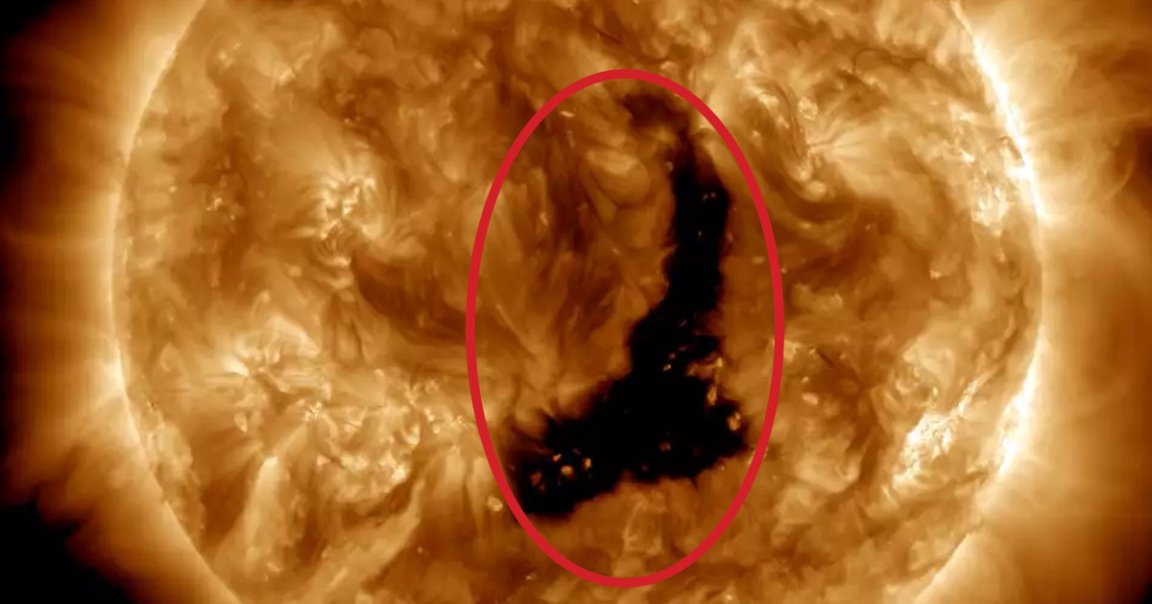
Solar Hole
A massive hole opened up in the Sun’s atmosphere over the weekend, measuring more than 60 times the diameter of the Earth across at its peak.
Coronal holes like this one, imaged by NASA’s Solar Dynamics Observatory, occur when the Sun’s magnetic field suddenly allows a huge stream of the star’s upper atmosphere to pour out in the form of solar wind.
Over a short period of time, these highly energized particles can eventually make their way to us and — if powerful enough — wreak havoc on satellites in the Earth’s orbit. In rare instances, they can even mess with the electrical grid back on the ground.
Fortunately, in the case of the latest hole, scientists aren’t expecting any major disruptions earlier this week beyond minor to moderate geomagnetic storms, as well as the associated auroras borealis in the night sky, according to SpaceWeather.com.
Weather Men
The appearance of the hole in and of itself isn’t entirely unexpected. The Sun will soon reach the peak of its 11-year cycle known as the solar maximum, ushering in a particularly turbulent period of activity.
This activity ranges from simple solar flares to massive outbursts of solar wind called coronal mass ejections.
Coronal holes are only visible in ultraviolet wavelengths, appearing as dark patches of relatively cool particles in our observations. They’re less likely to actually fling solar wind outwards as they’re simply an opening, allowing for these photons and electrons to escape.
The last time scientists spotted a large coronal hole was in March, causing powerful streams of solar wind to hit the Earth’s atmosphere.
Scientists have found that the Sun’s solar activity is already stronger than expected this time, meaning that we’ll likely see more awe-inspiring events there in the near future.
More on the Sun: Professor Warns That the Sun Is Angry and It Could Knock Out the Internet